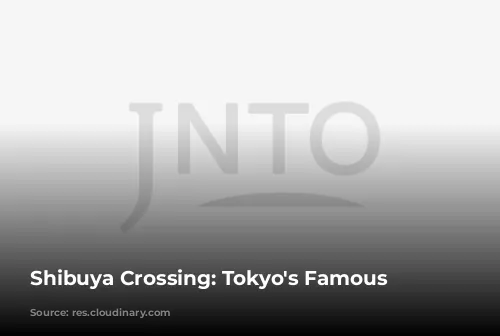Shibuya Crossing is a must-see for any visitor to Tokyo. It’s a legendary intersection that appears in countless movies, magazines, and blogs. During peak hours, an estimated 1,000 to 2,500 people cross this junction every two minutes, enough people to quickly fill a football stadium. This creates a thrilling rush hour scene that’s become a key part of Tokyo’s identity.
The Symphony of Shibuya
Shibuya Crossing is a fascinating mix of organized chaos and perfect synchronicity. It’s where pedestrians walk in all directions at once, creating a mesmerizing dance of movement. This unique spectacle draws people from all over the world who want to experience the energy of Tokyo.
Getting to Shibuya
The best way to reach this iconic intersection is by taking the JR Yamanote Line, a circular railway line that runs through Tokyo’s city center. Simply hop on the Yamanote Line and get off at Shibuya Station. Other lines that also stop at Shibuya include the JR Saikyo and Shonan Shinjuku Lines, Keio Inokashira Line, Tokyu Den-en-toshi Line, Tokyu Toyoko Line, and Tokyo Metro Ginza, Hanzomon, and Fukutoshin Lines.
The History of Shibuya Crossing
Shibuya Station opened in 1885, but the famous crossing only adopted its current form in 1932 with the opening of the Tokyu Toyoko Line. This line connected the bustling port city of Yokohama with Tokyo’s business center, making Shibuya a crucial stop.
As more train lines connected to the station and more people moved to Tokyo, the area grew rapidly. Today, Shibuya is a major transportation hub with nine main lines, a vast network of buses, and an abundance of shopping malls and businesses.
Hachiko: A Symbol of Loyalty
Outside Shibuya Station stands a bronze statue of Hachiko, the unofficial mascot of the area. This humble Akita dog represents loyalty and perseverance, two qualities deeply ingrained in Japanese folklore.
Hachiko’s story is both heartbreaking and heartwarming. He came to Tokyo with his owner, Professor Eizaburo Ueno, who taught at the University of Tokyo. Every day, Hachiko walked to the station with his owner and waited for him to return in the evening. Tragically, in 1925, Professor Ueno passed away from a brain hemorrhage.
Even though he was adopted by another family, Hachiko continued to go to the station every day for almost ten years, waiting for his owner to return. This enduring loyalty made Hachiko a symbol of fidelity, inspiring countless people. Today, the statue has become a popular meeting spot for lovers, friends, and families, who stand near Hachiko and watch the station entrance together.
A Unique Perspective
To truly grasp the scale of Shibuya Crossing and witness its rhythmic dance in real-time, take a look from above. Several vantage points offer this unique perspective, including the shopping malls and cafes above the station entrance. One popular spot is the Starbucks inside the QFRONT building.
Shibuya Crossing: A Cultural Icon
This instantly recognizable intersection has been featured in countless movies and TV shows, both in Japan and abroad. It’s a cultural icon, reflecting a mix of neon lights, diverse cultures, and trends, reminiscent of New York City’s Times Square.
In conclusion, Shibuya Crossing is more than just a busy intersection; it’s a vibrant symbol of Tokyo’s energy, cultural diversity, and captivating blend of tradition and modernity. It’s a destination that will leave a lasting impression on anyone who experiences its unique atmosphere.




